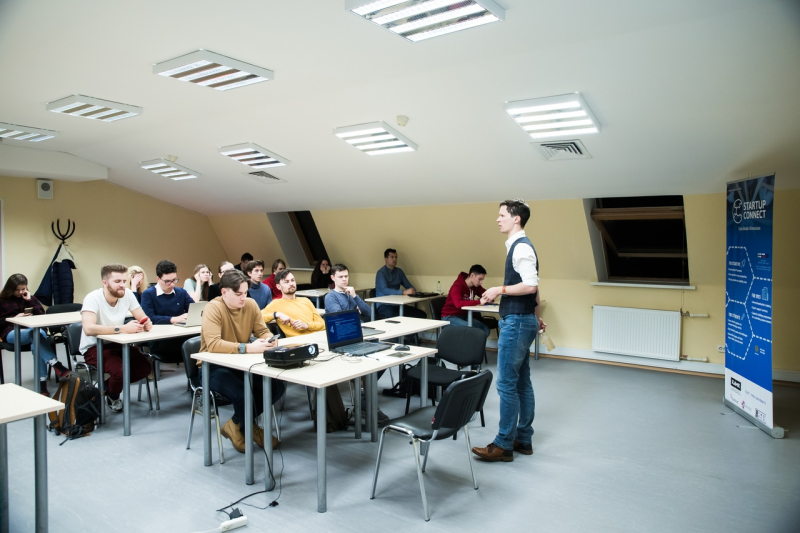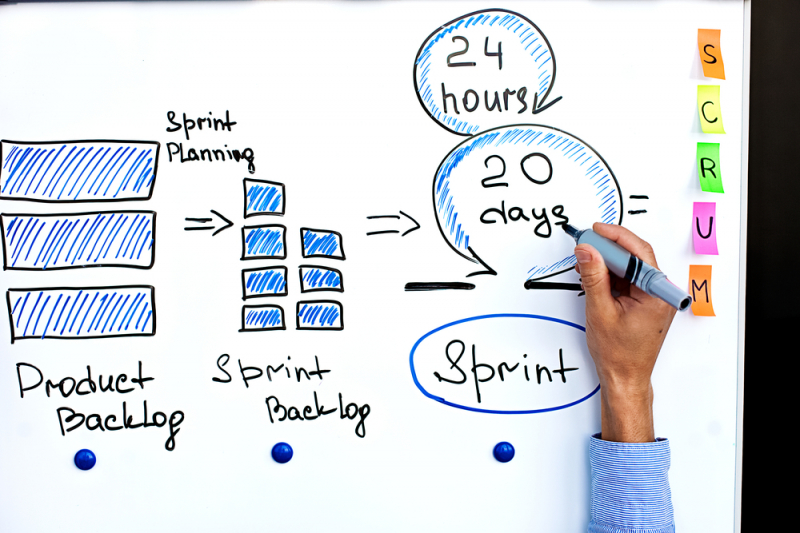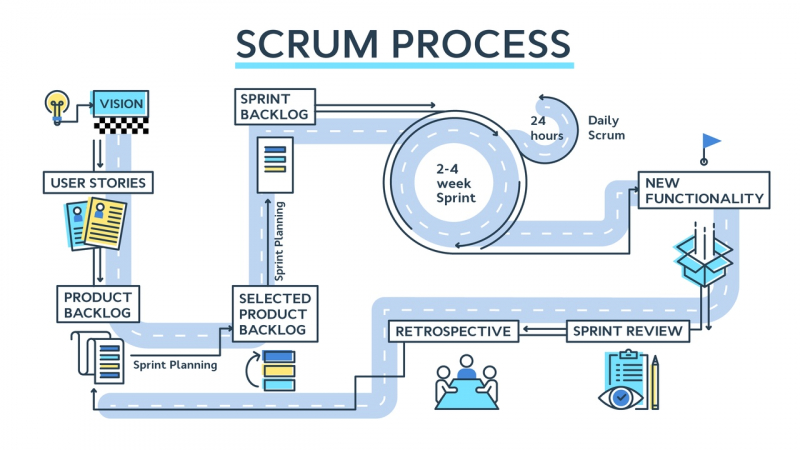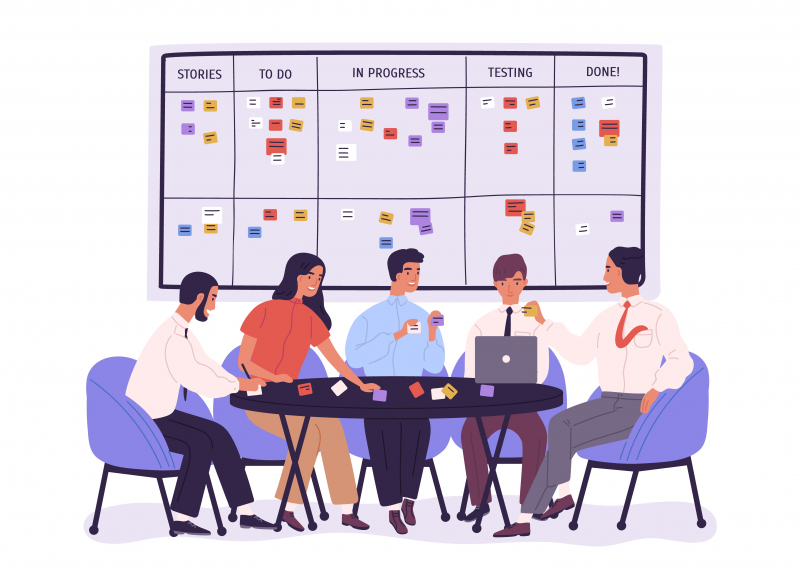Product and project: key differences
The labor market often mixes up product and project managers. But there is a cardinal difference between a product and a project. A product is something tangible, like an object. It’s not limited in time: its development can last forever. When its development halts, the product dies. Meanwhile, a project is a process with clearly defined constraints, usually related to time or budget. Projects can be a part of a product: for example, within the framework of an online store, taken as a product, there exist separate projects: an electronic paperwork system, CRM systems, and so on.
A product manager is responsible for the entire product, its entire lifecycle. A project manager is responsible for the implementation of a small project as part of a product. The end of a project puts an end to the responsibility of the project manager.

Responsibilities of a product manager
Let’s start with the things a product manager doesn’t do: they don’t write code, they don’t draw mockups or designs, they don’t cut deals nor do business development, they don’t write press releases. It often happens that in startups, everything gets dumped down on product managers: the development, code review, posts on social media. At the same, product development comes to a stop.
The main tasks of a product manager can be found at the intersection of business, technologies, and user experience – they are the connecting link between internal and external interested parties. A product’s owner, a business, in other words, has their own perceptions and preferences of what the product should look like and how it should function – a product manager’s task here is to channel these to the team that will be creating and developing this product. They work with all units: programmers, designers, marketing specialists, – and helps them reach a consensus. Another task of a product manager is to collect users’ feedback, analyze it, pinpoint their wishes and complaints.

It is a product manager who identifies the target market, creates customer profiles, prognosticates their needs and requirements for the product. They also do research on competitors.
It sometimes happens that a product manager gets mistaken with a CEO, but this isn’t right. A CEO deals with strategic business development tasks, which is outside of a product manager’s sphere of interests and job responsibilities.
Product development cycles
Products go through certain life cycles, and a product manager’s tasks proceed from specific development stages. The first stages – the generation and filtration of ideas, their testing, and the development of a strategy – don’t involve a product manager. They only join in at the stage of preparing the product for its first launch – that is, the MVP (minimum viable product) version.
At the initial stage, a product manager has to identify the requirements to the product and formulate a roadmap for a development team to follow. They have to be able to find common language with the team members to communicate the business owner’s wishes in the form of specific and comprehensible tasks and check that the product develops and grows.
At the launch stage, a product manager starts to garner feedback from the users – this is important as oftentimes, it turns out that the users perceive the product not in the way it had been initially envisioned.

Coming up with specific timeframes for the product’s periodical launches is also part of a product manager’s job description. For example, if it is decided that a new version will be released every two weeks, they must ensure that the plan is implemented without any delays.
A product manager keeps a backlog of all the changes to the product and sets priorities – first and foremost, a product should incorporate the features that would be beneficial to its users. A product manager’s work never stops: as soon as the product enters the market, you have to start planning its next iteration: introducing improvements, conduct tests, discuss the solutions based on the analytics and metrics data.
Methods of product and project management
Presently, the most widespread management methods are kanban and SCRUM. Both stem from the principle of lean manufacturing, which was common in post-war Japan.

For one, the kanban method – a board with cards describing current tasks – was first introduced in Toyota. Such an organization system facilitated keeping up with manufacturing deadlines, as it made possible to monitor which stage a detail was in, where processes slowed down or got stuck – and quickly solve this problem.
The principles of lean manufacturing and continuous improvement (kaizen) remain relevant today. They also served as a foundation for the methodology Scrum.
Also a rugby term, Scrum is an agile development methodology under which the work is divided into periods of one to four weeks, usually two weeks on average. This is called a sprint, and before the start of each of these time periods a set of topical tasks is chosen for a team to solve in its course. No other tasks can be added once the sprint starts.

For the purposes of managing a team throughout, special roles are allocated – it’s possible that one person can perform several:
- a product owner – a person who has a vision of what the team is going to do, produce or achieve. They take into consideration all the risks and benefits, as well as prioritize tasks: what can be done and what will encourage the team. This role coincides with the functions of a product manager.
- a team – the people who will be working on a sprint. Specialists forming part of this group have to possess all the skills and knowledge necessary to bring the product owner’s idea to life. Teams are always small, consisting of three to nine people: this is the optimal line-up that will allow the team members to reach arrangements on what and how they’ll do something. The team is usually assembled by a team lead. Each team works on a specific product or its part.
- a Scrum master – a person who monitors the project’s progress and helps the team eliminate encountered obstacles. They coordinate the initial discussions preceding a sprint during which tasks are set. They also organize daily standup meetings and participate in retrospective review of the sprint. Theirs is not a managerial role but rather one of support – they are more of a facilitator, someone responsible for communication within the team.

Ideally, the application of Scrum helps build a self-organizing team which doesn’t need control or management – they do the tasks themselves.
The main requirement for adopting the Scrum methodology in your work is transparency of all activities and processes. This allows us to achieve the goal in the fastest way possible. The most widespread way to ensure transparency is using scrumban, a specially modified version of kanban. The board can include a different number of columns, depending on the needs of each specific company or team, but three columns are always there – a column with the product’s backlog, or a list of all the requirements it needs to follow as well as its potential improvements; a column for the tasks in progress; a column for completed tasks.





